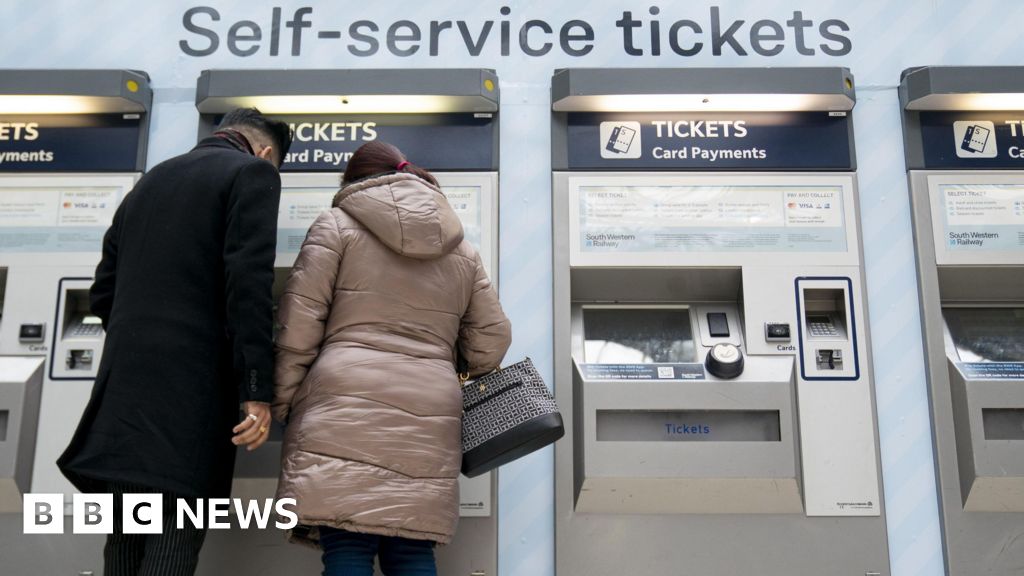ARTICLE AD BOX

 Getty Images
Getty Images
Warnings of a “painful” Budget tend to mean hefty tax rises are looming.
Chancellor Rachel Reeves claims she needs to find £22bn to mend a "black hole" in the public purse.
At the same time, she is pledging to end austerity and spend money on things like hospitals and roads, which are crucial to boosting growth.
So how can she pull off both without big tax hikes?
Reeves is expected to have a trick up her sleeve.
It's centred on the government's self-imposed borrowing limits. This hack won’t do away with tax rises – but could limit their scale.
Why do we need borrowing rules?
In the UK, the government has decided to stick to the current so-called fiscal rule that debt – the total amount the government owes – must fall in five years’ time.
Almost all rich countries have some form of these rules, to maintain credibility with financial markets and taxpayers.
That’s crucial. In nine out of 10 years, the UK has run a deficit - the difference between money coming in and going out - with the shortfall usually matched by borrowing on those markets. The less credible the rules or the plans to meet them, the higher the borrowing costs.
Liz Truss’s 2022 mini-Budget was a prime example of the price of lost credibility. Her failure to provide plans for how her government would fund the biggest tax cuts in half a century, and a lack of independent vetting of those plans, caused borrowing costs to soar. And so too did the cost of new fixed-rate mortgage deals – which are also linked to those markets.
Rachel Reeves' debt hack
The chancellor sets his or her own rules. However, it’s up to the independent Office for Budget Responsibility (OBR) to mark their homework and assess the impact on the public finances.
Ahead of the general election, Reeves said she’d broadly replicate the rules set by her predecessor Jeremy Hunt. At the time of his March Budget, the OBR forecast he’d meet the rules with very little cash to spare.
Reeves is expected to dodge some of that squeeze by changing the definition of debt. There are many options.
One is to change how the operations of the Bank of England are treated. In the pandemic, the Bank put funds into the system by buying long term investments known as bonds to boost the economy. As it sells those again, it’s incurring losses due to higher interest rates.
A different definition of debt, which treats those losses differently or omits them altogether, could allow the chancellor to say debt is falling more rapidly in five years' time than on the current measure – giving her at least £16bn more to spend.
Or she could adopt a different approach to the public accounts, to make more of the value of what the UK owns rather than just count money going in and out.
Public sector net financial liabilities is a broader measure, including, for instance, the money the government gets from people repaying their student loans, which could give Reeves £50bn more to spend.
An even wider measure, public sector net worth, incorporates estimates of the value of infrastructure such as buildings and transport. This could mean a bit more wiggle room still – but is particularly difficult to measure.
Smoke and mirrors, a fiscal fudge and a masterclass in creative public accounting? The Conservatives have already expressed some concerns.

 Getty Images
Getty Images
Rachel Reeves will deliver her first Budget on 30 October
No plans to spend it all at once
All these debt measures have various pros and cons. And the one which gives the most favourable answer today may not next year. But all are already published and economists are fairly relaxed about which one is used.
But what of those borrowing costs? £1 of every £12 the government spends goes on interest payments on existing debt.
As expectations grow that it will look to borrow billions more from the financial markets, the cost of new borrowing is already rising affecting fixed-rate mortgage deals.
However, analysts say the rises are likely to be limited, as there’s good appetite among investors to put more money into the system.
And Reeves won’t spend all the available money. Credibility relies on appearing prudent, and she has said she’s not in a “race to get money out of the door”.
Moreover, the vast bulk of any extra spending allowed by a tweak in the rules will go towards investment, or capital spending – in the likes of school buildings and roads.
For Reeves has a second crucial rule she has committed to - the government will fund all day-to-day spending with tax receipts.
Investment projects, if done wisely, create value for future generations, and are recognised by economists and investors as instrumental to boosting growth.
As it stands, investment spending is set to decline relative to the size of the economy. Restoring that would need roughly an extra £20bn.
In an attempt to keep the markets calm, Reeves has promised limits on the speed and extent of investment spending.
Yet that leaves a multi-billion pound problem to solve. On current plans, many public services are facing squeezed budgets for day-to-day spending.
Alleviating that and fulfilling the government’s other manifesto priorities is still likely to mean tax rises, of up to £25bn, according to the Institute for Fiscal Studies. The Labour government hopes to raise £9bn from measures included in its manifesto, but the rest has yet to be spelled out.
Even with a Budget rules hack, there will be winners and losers, determined by the chancellor. The rest of us may have to wait until 30 October to discover which camp we’re in.

 3 months ago
16
3 months ago
16








 English (US) ·
English (US) ·